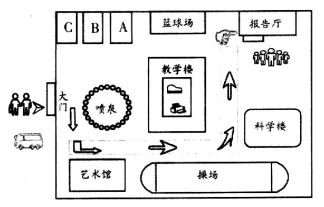题目内容
阅读理解。阅读下列短文, 从给的四个选项 (A、B、C和D) 中, 选出最佳选项。
Nick Petrels is a doctor in Montreal.He works 60 hours a week.He takes care of 159 patients a week in the hospital and at his office.He’s been a doctor for ten years.
Dr Petrels gives his patients good medical advices.But he doesn’t just tell his patients when to do.He also sings to them on television.Dr Petrels has his own TV show.The show is in Italia,English and French.The doctor starts the show with a song and then gives medical advice.He explains a medical problem or disease in simple language.After that,he sings another song.
Dr Petrels produces and performs in his own show every week.The program is very popular with his patients and with people who enjoy his singing.His dream is to perform in Las Vegas.His favorite songs are love songs,and he has a compact disk of love songs that he wrote.Dr Petrels says,“I always love to sing.All my problems are gone when I sing.”But when Dr Petrels was young,his father didn’t want him to be a singer,so he went to a medical school.
Some people tell Dr Petrels he can help people more as a doctor.But Dr Petrels says he helps people when he sings,too.“I like to make people smile.Sometimes it’s difficult to make a sick person smile.Medicine and entertainment (娱乐)both try to do the same thing.They try to make people feel good.”
1.Dr Petrels works 60 hours a week,because he________.
A.gives his patients medical advices
B.takes care of 159 patients a week
C.sings on television
D.has his own TV show
2.Why is Dr Petrels called a singing doctor?
A.Because he has been a doctor for ten years.
B.Because he always loves singing.
C.Because he is popular with his patients.
D.Because he also sings to his patients on TV.
3.In his TV show,Dr Petrels________.
A.sings and gives medical advices
B.sings about different diseases
C.starts to explain diseases with a song
D.sings love songs he wrote
4.Dr Petrels’ show is popular________.
A.in Las Vegas
B.at medical school
C.with people who like his singing
D.with patients in Montreal
5.Dr Petrels says he likes to________.
A.help people sing B.make people feel better
C.do the same thing D.make difficult people smile






